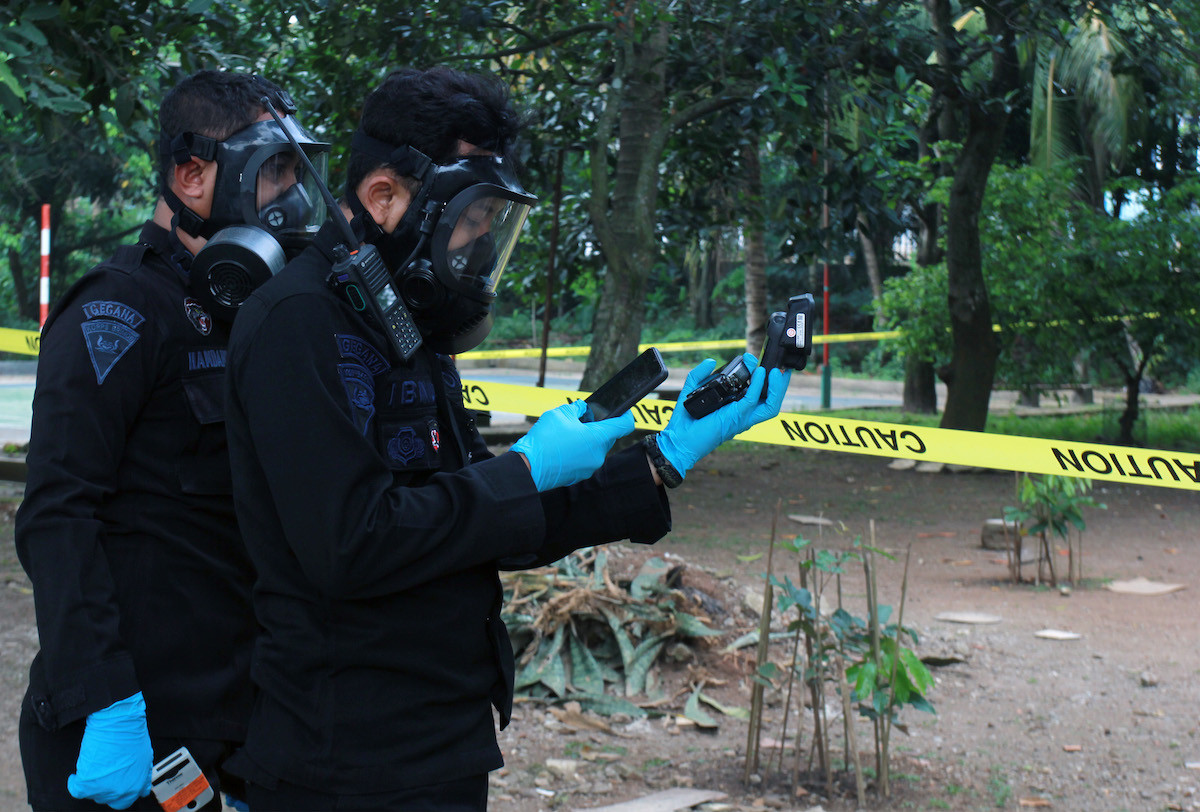Popular Reads
Top Results
Can't find what you're looking for?
View all search resultsPopular Reads
Top Results
Can't find what you're looking for?
View all search results‘Don't panic’: Nuclear agency urges controlled reaction to radiation in South Tangerang housing complex
The Nuclear Energy Regulatory Agency (Bapeten) first detected the radiation during a routine check meant to ensure that the agency’s mobile radiation detection unit was working properly.
Change text size
Gift Premium Articles
to Anyone
T
he National Nuclear Energy Agency (Batan) has asked residents of the Batan Indah housing complex in South Tangerang, Banten, to remain calm after finding high levels of radiation within the complex.
Agency spokesperson Heru Umbara said locals should not panic because the case was being handled by the relevant authorities.
"Residents can carry out activities as usual, as long as they do not enter the area that has been marked as contaminated. If managed properly, exposure to this radiation will not endanger the residents," Heru said in a statement on Saturday.
The Nuclear Energy Regulatory Agency (Bapeten) first detected the radiation during a routine check meant to ensure that the agency’s mobile radiation detection unit was working properly.
“From Jan. 30 to 31, Bapeten conducted a function test with target areas of Pamulang, the Puspiptek [Center for Science and Technology Research] housing complex, the Muncul area, the ITI [Indonesia Institute of Technology] campus, the Batan Indah housing complex and the Serpong train station,” Bapeten spokesperson Indra Gunawan said in a statement on Friday.
He said that all of the areas showed normal radiation levels except for a vacant lot next to the volleyball court at Block J of the Batan Indah complex.
“A joint Bapeten and Batan team conducted a search to find the source of the high radiation on Feb. 7 to 8 and found several radioactive fragments,” he said, adding that after the fragments were removed, tests showed that the radiation levels in the area had decreased but were still above normal levels. “Based on those results, we concluded that the contamination had spread in the area and decontamination efforts had to be conducted by removing or dredging contaminated soil and removing contaminated trees and other vegetation.”
Bapeten spokesperson Abdul Qohhar Teguh said that the agency was not yet able to confirm the source of the radioactive fragments found in the area.
“For the time being, we have not focused on investigating the location of the source, where it came from, why it was there, who brought it. At the moment the joint team is still focusing on clearing the scene,” Qohhar told The Jakarta Post on Saturday.
He added, however, that the team’s initial findings indicated that the radiation did not come from a nuclear reactor leak. The Puspiptek building, which is located about five kilometers away from the Batan Indah complex, houses several small reactors used for experimental purposes.
“The source of radiation that we found [in the complex] is Caesium-137, which is frequently used for industrial purposes,” he said. “Caesium-137 is also one of the substances that will contaminate the environment when there is a reactor accident, such as at Chernobyl or Fukushima. But in addition to Caesium-137 there would also be other substances [in a reactor accident]. In this case, the only radiation source is Caesium-137, so the hypothesis that this incident is due to a reactor leak is baseless.”
Qohhar added that when radiation exposure rate went above a certain threshold, the effects would be felt by humans, with symptoms such as changes in skin color, dizziness, nausea or even death.
“The exposure rate in Batan Indah is far below this threshold,” he said.
A resident of Batan Indah complex, who asked to remain anonymous, said that she received a letter from the neighborhood unit (RT) earlier this week informing her about the radiation. She felt everything was under control.
“I think there is no need to panic. I believe that the authorities are doing their best to solve the problem. And if they thought it was dangerous, they would have warned us. But so far there is still no warning, so we’re safe,” she said.
She said that she passed the volleyball field every day during her morning walk and that besides the yellow barrier tape around the vacant lot, everything looked normal.
Heru said that Batan was currently in the process of cleaning up the exposed area and had collected 52 drums of soil and vegetation from the locations.
“The results of the cleanup showed that the material causing the radiation had mixed with the soil. The findings are currently being analyzed in the Batan laboratory,” he said.
He added that after the cleanup, the radiation levels fell by 30 percent, from 149 microSieverts per hour to 98.9 microSieverts per hour. The normal exposure rate from background radiation is around 0.03 microSieverts per hour.
The clean-up process, Heru said, started on Feb. 12 and would continue until early March.
He added that the team would soon conduct a radiation test known as “whole-body counting” on residents who lived in the exposed area to measure their bodies’ radioactivity levels.
"We will keep doing the cleanup until the area is thoroughly clean and there is no longer any danger to the people and the environment,” Heru said.










